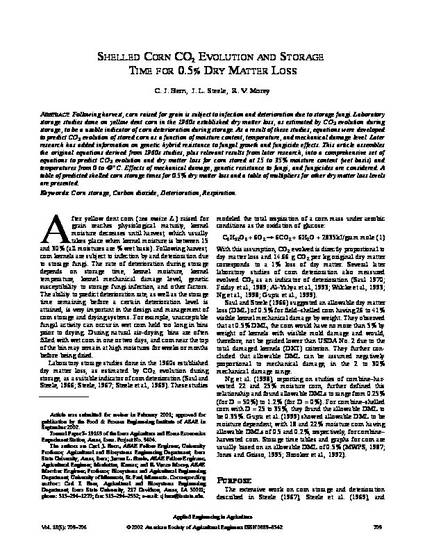
Following harvest, corn raised for grain is subject to infection and deterioration due to storage fungi. Laboratory storage studies done on yellow dent corn in the 1960s established dry matter loss, as estimated by CO2 evolution during storage, to be a usable indicator of corn deterioration during storage. As a result of these studies, equations were developed to predict CO2 evolution of stored corn as a function of moisture content, temperature, and mechanical damage level. Later research has added information on genetic hybrid resistance to fungal growth and fungicide effects. This article assembles the original equations derived from 1960s studies, plus relevant results from later research, into a comprehensive set of equations to predict CO2 evolution and dry matter loss for corn stored at 15 to 35% moisture content (wet basis) and temperatures from 0 to 49³C. Effects of mechanical damage, genetic resistance to fungi, and fungicides are considered. A table of predicted shelled corn storage times for 0.5% dry matter loss and a table of multipliers for other dry matter loss levels are presented.
Available at: http://works.bepress.com/cjbern/57/

This article is from Applied Engineering in Agriculture 18 (2002): 703–706, doi:10.13031/2013.11325. Posted with permission.